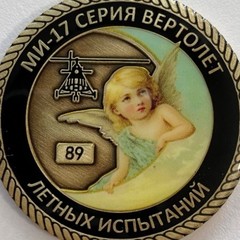-
Posts
3447 -
Joined
-
Last visited
-
Days Won
4
Content Type
Profiles
Forums
Events
Everything posted by AlphaOneSix
-

missing info Damage model issue, too vulnerable?
AlphaOneSix replied to Kumabit's topic in Bugs and Problems
Well, I guess it's not a flying tank. -

now available When's black-shark 3 coming?
AlphaOneSix replied to hawa0835's topic in DCS: Ka-50 Black Shark
Yes, but the actual turrets are removed. They left on the mounting points. -
Well, ED does not agree with one or more of your statements.
-
Yeah I think we just misunderstand each other. When you say "center" I read that as "last trimmed position" but I think you mean actual center. But yeah, if you move the pedals, then press and release the trimmer, then the pedals will spring load to that new position. I think that's what you mean, which is correct as you've been saying.
-
No, real helicopters do have springs that return the pedals to their last trimmed position.
-
Nevermind, I misunderstood that you were saying that real helicopters don't have springs that return the pedals to their last trimmed position. I don't think that's what you meant.
-
True, but none of them have ever been Apaches.
-
Why would the oil be changed at the FARP?
-
The engine anti-ice is the same. However, the anti-ice bleeds air from the engine compressor, so you'll lose some power.
-
It's still the classic autopilot name. I hear pilot's use it all the time.
-

A better way to deal with the drifting yaw trim
AlphaOneSix replied to jubuttib's topic in Bugs and Problems
Just leave the yaw channel turned off unless your intent is to fly in a straight line with your feet off the pedals. -
There are no IR jammers. There are only passive countermeasures (i.e. the upturned exhausts) and flares.
-
Well, then you should skip this release. Plenty of others will be excited by the Igla and MWS. Everyone will get the new art.
-
That's it, just MWS and Igla. And an art rework.
-

Any advice for night missions / NV goggles?
AlphaOneSix replied to Snappy's topic in DCS: Mi-8MTV2 Magnificent Eight
The items that cause the problems...can they be turned off...like via circuit breaker? That should turn out those cockpit lights. Of course you lose those systems, but may be better that way. -
No need to troll.
-
Steam doesn't have a December 1st date. It already slipped to December 15th.
-
Nope they are both aluminum. The structures on both are composed of the same materials, but the components on Russian helicopters tend to be heavier. Not heavier materials, just more beefy. In my experience, Russian components are "overbuilt" while Western components are built to much more exacting tolerances and are therefore light but also more expensive. I don't believe this is true, assuming you mean that it was supposed to be primarily an air-to-air platform. This is what NATO and the US thought initially when they first saw them, but it turns out that was never the case, and it was meant primarily to attack ground targets.
-
The gears are used to transmit the Free Turbine rpm to the engine fuel control. In this manner, the engine fuel control knows the rotor speed, and thereby knows if it needs to increase fuel flow to increase engine power and therefore rotor rpm, or decrease fuel flow to reduce engine power and therefore rotor rpm. The accessory gearbox is on the front of the engine and is not visible in this picture. The PTIT probes are not really visible in this picture either. There are several (12 or 14?) PTIT probes that are installed right between the combustion can and the compressor turbine. There is very little difference between a VM and a VMA. It's basically just better cooling that allows more power to be produced at the top end.
-
It uses sensors that detect IR and UV radiation and can use that information to classify burning rocket motors. Magic is a much better answer.
-
Yep! I should note that the CMWS also calls out the clock direction of the detected threat, in addition to displaying it on the tiny little CMWS screen.
-
I know someone will correct me if I'm wrong on this, but I believe that the ABRIS only shows them like that when the mission designer sets it up to do so. For example, last known locations of suspected threats are loaded into the ABRIS prior to flight, but new threats encountered along the way won't show up. I could have this totally wrong so if this does not match your experience, I apologize.
-
Yes, and depending on the software version, rockets and small arms...although I think the version we will have will only detects rockets and missiles. I don't know if DCS will program in this differentiation, but in real life it knows the difference between the signature of a missile and an RPG. For an RPG it will declare "Rocket, Rocket" but will not dispense flares, for a missile it will declare "Missile, Missile" and will dispense flares according to some built-in program that is not editable by the pilot.



